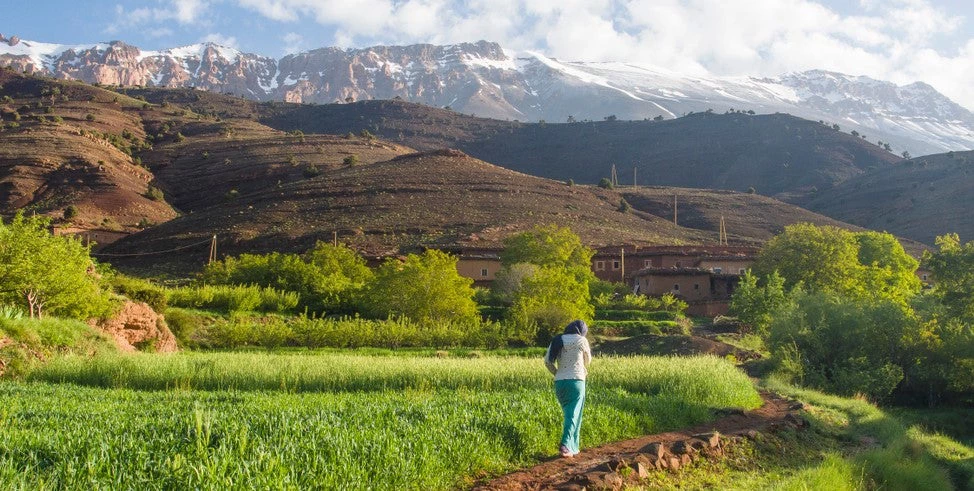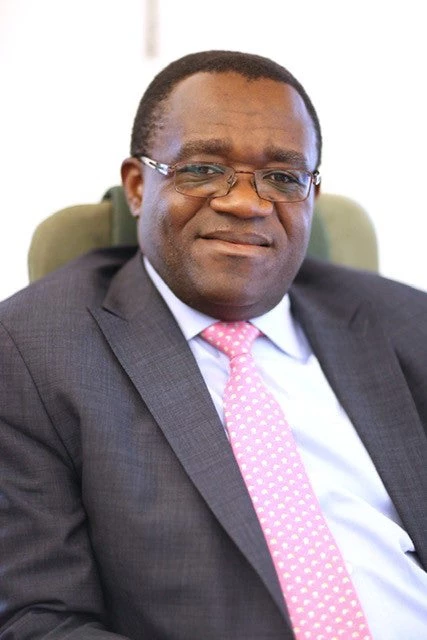 Woman walking on rural path in Morocco. (Shutterstock.com/Tom Camp)
Woman walking on rural path in Morocco. (Shutterstock.com/Tom Camp)
All eyes are on Egypt this week as the world meets in Sharm El Sheikh for COP27. A year ago, at COP26, the World Bank Group launched the Country Climate and Development Reports (CCDRs), a new core diagnostic tool that seeks to align climate action with development priorities. In the four upcoming reports for the Middle East and North Africa region (Egypt, Iraq, Jordan, and Morocco, which has been published), climate justice has been a critical and common focus.
Climate justice, defined as safeguarding the rights of the most vulnerable people and sharing the burdens and benefits of climate change, is a new pressure point affecting the region’s social contracts , which have steadily weakened over the last three decades. A deterioration in the provision of basic services such as water and electricity amid weather extremes in urban areas has fueled group grievances, especially in Iraq, Syria, and Lebanon.
In this context, we need to be reminded that the Arab Spring uprisings occurred despite good economic trends in the preceding decade. Shanta Devarajan, former MENA Chief Economist at the World Bank, termed this observation as the “Arab Spring paradox,” pointing to the need to “level the playing field.”
A decade after the Arab Spring uprisings, little progress has been made on bridging social disparities. Instead, climate change has brought a new wave of socioeconomic challenges, worsened by overlapping crises such as the war in Ukraine and the COVID-19 pandemic, which will further test the relationship between states and people in the region.
As climate change manifests in increasingly visible ways, the poor in MENA will be hit the hardest. Think of the farmers who will lose their harvest due to prolonged droughts and the construction workers who will have to endure working under higher temperatures for longer periods. Think of the displaced migrants who live in informal settlements or camps that are increasingly vulnerable to floods and strong storms.
Beyond the poor, climate change will affect all strata of MENA societies through multiple channels. In Morocco, climate-induced changes (water availability and crop yield) on rainfed agriculture could result in out-migration to urban areas of up to 1.9 million Moroccans (about 5.4% of the total population) by 2050.
In the upcoming Iraq CCDR, focus group discussions with farmers revealed that increased water scarcity and salinity is shrinking farmed land and incomes at an alarming speed. Iraqi women, who often grow Henna trees and vegetables, seem to be particularly affected.
Moving towards just climate action in MENA
A just climate action is one that recognizes climate risks and vulnerabilities as core threats to livelihoods and stability. It is also one that balances short- and long-term development and climate needs while ensuring fair distribution of burdens and benefits and protecting the most affected and vulnerable groups. Just and human-centered climate action must:
1. Adopt climate justice and a just transition as a guiding principle in government plans and strategies that underline MENA countries' quest for sustainable and diversified growth. Being clear on who stands to benefit and lose from such a transition is critical in targeting efforts, creating alternative livelihoods, and minimizing political resistance to breaking away from the status quo.
2. Integrate climate justice principles into social protection policies. These can take the form of climate insurance mechanisms to people and firms, especially for small-scale farmers who will be among the most impacted by climate change.
3. Leverage climate dialogue to strengthen the interface between citizens and governments. Public participation in the planning, development, and implementation of climate policies is key to foster their legitimacy and social acceptance. Early, but important steps, can perhaps start on the municipal and local levels on sectoral and regional planning, proposed policies, and investments.
4. Promote transparency and ensure equal right of access to information. Poor people have less access to information about climate risks. Deliberate programs to reverse unequal access to information on climate risks and forecasting that can not only help people prepare for climate shocks, but in some cases save lives as the frequency and intensity of extreme weather events increase.
5. Empower new generations with skills and knowledge required in a green economy. Climate actions offer ample opportunity to invest in human capital and expand the knowledge and skill base of the workforce. For example, climate smart agriculture and the potential of innovation linked to it could offer exciting opportunities for young people who are otherwise moving away from agriculture.
Green, resilient, and inclusive development should be at the core of policy making. The green and resilient parts of the transition narrative will be hard to sell without a strong commitment to the inclusion part. A just transition that aspires to share the pains and benefits of climate change action equally and fairly could be a steppingstone to reimagine a new MENA with a stronger social contract that includes everyone.


Join the Conversation